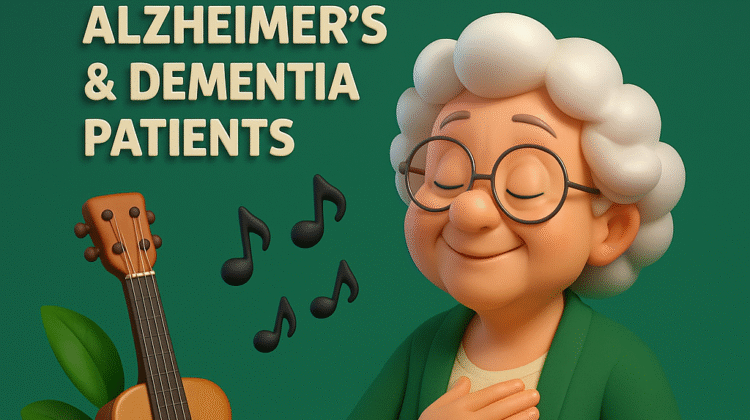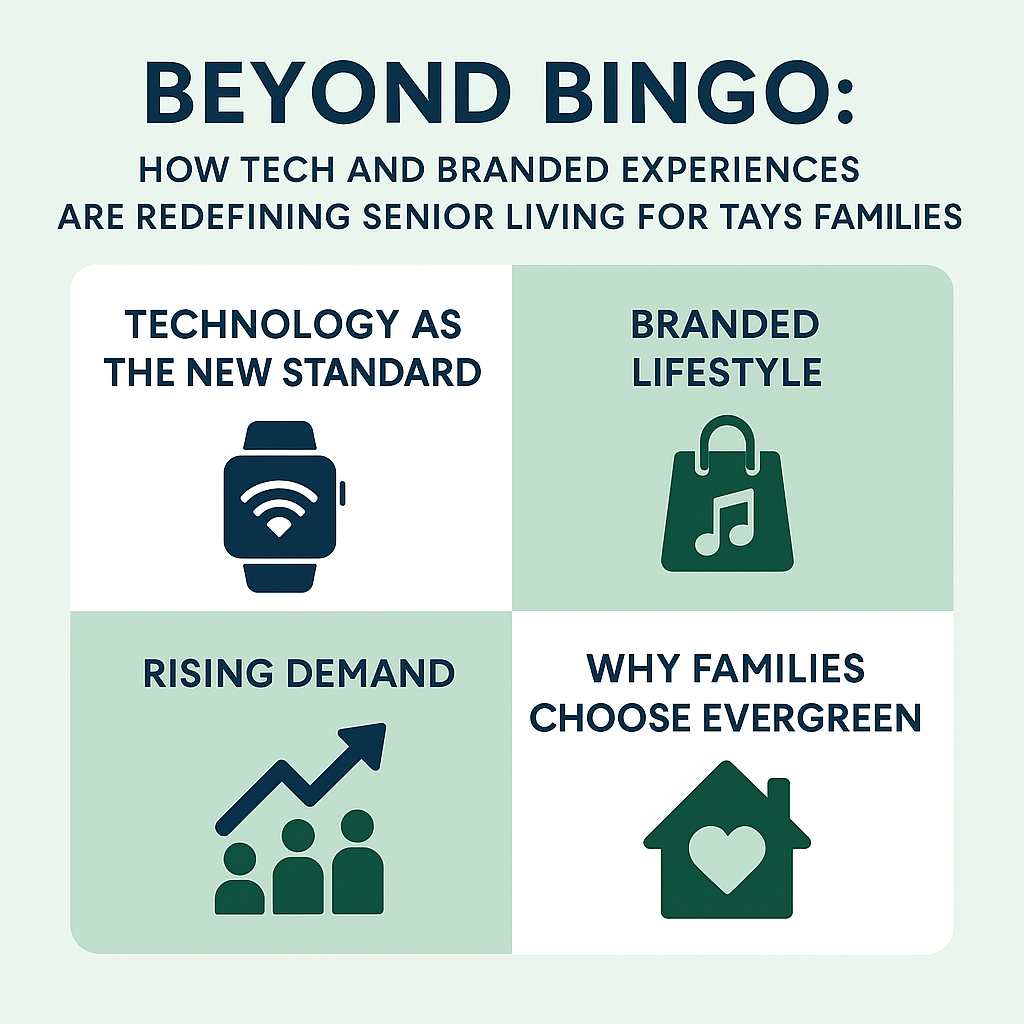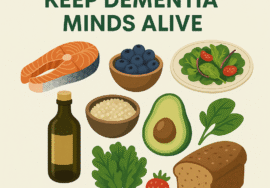
Helping Alzheimer’s and Dementia Patients Reconnect Through Music Therapy
If you’re researching care for a parent with Alzheimer’s or dementia, you’re probably facing a mix of worry, guilt, and confusion. You want more than just safety and supervision. You want quality of life. You want moments of connection. And one of the most powerful and overlooked tools for restoring that connection is music.
This blog series dives deep into how music therapy improves memory, mood, and recognition in those living with cognitive decline. Whether you’re considering assisted living in Katy TX or evaluating memory care services in your area, you’ll find both clarity and hope here.
Table of Contents
- The Profound Power of Music on the Aging Brain
- How Music Therapy Works in Alzheimer’s and Dementia Care
- Real Results: Music Therapy in Assisted Living and Memory Care Communities
- Choosing a Memory Care Program that Offers Music Therapy
- What Families Need to Know: FAQs on Music Therapy, Memory Loss, and Local Care Options
The Profound Power of Music on the Aging Brain
Music reaches parts of the brain that other therapies cannot. It does more than fill silence. It activates memories, stirs emotions, and helps individuals feel seen, even when language and logic begin to fade.
That’s because musical memory is processed differently than speech or facts. While verbal memory tends to deteriorate early in Alzheimer’s disease, the brain’s music pathways remain accessible much longer. These pathways link deeply with emotional and autobiographical memories, especially in the areas of the brain like the amygdala and hippocampus.
You may have seen videos of elderly individuals who can no longer speak but suddenly sing when they hear a familiar song. These are not isolated incidents. They reflect what research has shown for years. Music taps into deep-rooted neurological circuits and can trigger real moments of presence and clarity.
Clinical studies and real-world results show that music therapy can:
- Reduce agitation and emotional distress
- Encourage verbal expression and engagement
- Decrease feelings of isolation
- Support cognitive stimulation
- Lower the need for sedative medications
- Spark meaningful recognition and interaction
These benefits are not just theoretical. Communities offering memory care in Katy TX are implementing personalized music programs as part of their daily care approach. This isn’t simply entertainment. It is therapy that honors each resident’s life story.
When a father with late-stage dementia hears a Sinatra tune and starts to tap his hand on the chair, or a mother recognizes the church hymn from her childhood and smiles for the first time in days, those moments matter. Music becomes the bridge between memory and the present. It allows for connection when other paths are blocked.
For adult children, this can be a turning point. Watching a parent respond to music creates relief, reassurance, and sometimes, a profound sense of peace. You are no longer just managing decline. You are witnessing humanity remain intact.
How Music Therapy Works in Alzheimer’s and Dementia Care
Understanding how music therapy is applied in dementia care begins with one key distinction. This is not passive listening. Music therapy is an evidence-based clinical practice led by licensed professionals who design interventions to address specific physical, cognitive, emotional, or social goals. When delivered thoughtfully, music can help patients unlock memories, reduce distress, and even regain aspects of identity that seem lost.
In senior living communities, especially in advanced memory care environments like those found in Katy TX, music therapy is increasingly integrated into the care model. These communities recognize that music does more than entertain. It enhances cognitive function, emotional regulation, and overall well-being.
What Does a Music Therapy Session Look Like?
A licensed music therapist typically meets one-on-one or in small groups with residents. Sessions may include:
- Singing familiar songs from the resident’s era
- Playing simple percussion instruments
- Guided rhythmic movement to music
- Lyric analysis and reminiscence discussion
- Passive listening with curated playlists
- Call-and-response vocal exercises
- Improvisational music-making using drums, bells, or xylophones
These aren’t random activities. Each is selected based on the individual’s cognitive status, mobility, and personal music history. For example, someone in early-stage Alzheimer’s may benefit from interactive sessions that promote speech and memory recall. In contrast, late-stage patients may respond best to soft, familiar melodies that create calm and reduce agitation.
Why Personalized Playlists Matter
One of the most powerful tools in music therapy is the creation of individualized playlists based on a person’s life history. Songs from adolescence and early adulthood tend to have the strongest emotional resonance. For instance, a resident who grew up attending church in the South may light up at the sound of gospel hymns. A former jazz enthusiast may relax instantly when hearing Coltrane or Miles Davis.
These playlists are more than background music. They are therapeutic touchpoints. Many memory care facilities in Katy TX have begun using digital music apps and headphones to create portable, private listening experiences that can be used during personal care routines, meals, or transitions—times that are often stressful for individuals with dementia.
The Neurological Effect of Rhythm and Repetition
Dementia patients often struggle with communication, coordination, and short-term memory. But music, particularly rhythmic music, offers structure the brain can follow. For instance, clapping, tapping, or moving to a beat helps reinforce motor patterns and timing. This is why therapists use percussion activities to support gross and fine motor skills, even when verbal instructions are no longer understood.
Repetition also helps. Familiar choruses, rhythms, and refrains provide cues that help trigger memory recall. Even residents who cannot form complete sentences may be able to sing full lines of a beloved song.
Behavioral and Emotional Impact
For adult children, one of the most painful parts of this journey is watching a parent suffer from confusion, anxiety, or personality changes. Music therapy can offer a break from those symptoms. It is particularly effective at easing sundowning—late-day confusion and agitation that is common in dementia patients.
Caregivers have reported that after even a brief music session, residents are more relaxed, cooperative, and socially engaged. In some cases, regular music therapy has allowed doctors to reduce or eliminate medications used to manage mood or sleep disturbances.
Collaboration With Care Teams
Music therapy is not practiced in isolation. Therapists work alongside nursing staff, activity coordinators, and family members to integrate music into daily care plans. If a resident resists bathing, for example, a calming playlist may be used to ease transitions. If a resident becomes agitated during sundowning hours, rhythmic drumming or humming can redirect that energy in a productive way.
In high-quality memory care communities, including those near Katy TX, this collaboration creates a seamless experience that supports the resident’s entire day—not just the time spent in a therapy room.
In the next section, we’ll look at case studies and real examples from assisted living and memory care communities. You’ll see how families, caregivers, and residents describe the transformative effect of music therapy when it becomes part of a long-term care strategy.
Real Results: Music Therapy in Assisted Living and Memory Care Communities
When it comes to Alzheimer’s and dementia care, families want more than promises. They want proof. They want to know what really works—not just in clinical studies, but in real-life communities where their loved ones will spend their days. Music therapy consistently delivers results that are both measurable and deeply human.
Across assisted living and memory care communities in Katy TX and throughout the country, music therapy has moved from an optional activity to a key element of personalized care. Its impact goes beyond momentary enjoyment. Families, caregivers, and residents alike report long-term benefits that support dignity, identity, and emotional well-being.
Stories From the Front Lines of Care
Consider the case of Evelyn, a resident in a memory care community just outside Katy. Her daughter described her as once vibrant and talkative, but in recent months, she had become withdrawn. Verbal communication was nearly gone. Attempts to engage her were often met with blank stares or confusion.
After her care team introduced music therapy, something changed. They played a playlist built from Evelyn’s favorite songs from the 1950s—Patsy Cline, Elvis Presley, and early Motown. Within minutes, she began tapping her fingers on the armrest. By the end of the week, she was mouthing the words to her favorite songs. Her daughter said it was the first time she had seen her mother’s eyes truly light up in months.
This is not an isolated story. Therapists and staff across senior living communities in Katy and beyond have documented similar transformations. Residents who are typically nonverbal begin to sing. Those who wander or show signs of agitation during transitions become calmer with the right musical backdrop.
What Families and Staff Are Saying
In a recent survey of families with loved ones in memory care units offering music therapy, the results were striking:
- 84% reported improvements in their loved one’s mood and alertness after sessions
- 71% observed better participation in daily activities
- 66% said they saw an improvement in social interaction with caregivers or peers
- 59% noticed reduced reliance on medication for behavioral symptoms
One adult son shared that after months of failed conversations, his father responded to a military march tune from his army days with a salute and a smile. “It was like reaching through the fog and finding him there,” he said.
Caregivers also note the benefits. Music therapy makes their work more effective. Residents become more receptive to care, transitions are smoother, and daily routines unfold with less resistance. As one nurse put it, “Music gives us a way to meet them where they are. It becomes a shared language.”
Why Integration Matters
Music therapy shows its true value when it becomes an integrated part of the care strategy. In well-staffed memory care environments near Katy TX, this means that music isn’t limited to scheduled sessions. It’s used in dining areas to improve mealtime behavior. It’s available during personal care routines to soothe anxiety. It’s offered during quiet hours to reduce sundowning symptoms.
In these communities, staff are trained to recognize musical preferences, understand the therapeutic uses of rhythm, and involve family members in building meaningful playlists. This collaborative approach turns music into a daily tool for connection and support.
A Look at the Data
Recent studies support what families and caregivers observe firsthand. One study from the Journal of Alzheimer’s Disease found that residents participating in bi-weekly music therapy for six months showed significant improvement in mood, verbal fluency, and overall responsiveness. Another clinical trial published in Frontiers in Psychology confirmed that music therapy reduced depression and improved memory recall in moderate-stage Alzheimer’s patients.
These outcomes align with what families are already learning as they explore options like assisted living or memory care in Katy TX. When evaluating facilities, the presence of a robust music therapy program is increasingly seen as a marker of high-quality, person-centered care.
Guidance for Families Exploring Care Options
If you’re beginning to explore senior living for a parent, ask each community how they incorporate music therapy. Do they have a licensed therapist on staff? Are playlists tailored to individual residents? How is music used during transitions, care routines, or behavioral challenges?
Facilities that invest in music therapy show a deeper commitment to quality of life. They understand that dementia care isn’t just about safety. It’s about preserving joy, connection, and the threads of identity that still remain.
Choosing a Memory Care Program that Offers Music Therapy
When you’re visiting memory care communities or assisted living facilities in Katy TX or anywhere else, it’s easy to get distracted by the surface. You’ll see elegant lobbies, activity calendars, and restaurant-style dining. But beyond the brochures and staged tours, there’s one question that matters most: How will this place help my parent live with dignity, connection, and joy?
Music therapy can play a critical role in answering that question. But not all communities offer it. And among those that do, the quality and consistency of delivery can vary widely. This section will help you understand what to look for, what to ask, and how to evaluate whether music therapy is truly embedded into the care philosophy or simply used as a marketing term.
Why Not All Music Programs Are the Same
First, it’s important to understand the difference between music as entertainment and music as therapy. Many facilities list “musical performances” or “sing-alongs” on their activity calendars. These can be fun and uplifting, but they aren’t music therapy.
True music therapy is:
- Conducted or supervised by a board-certified music therapist
- Goal-oriented and individualized
- Documented with measurable outcomes
- Integrated into the resident’s care plan
- Designed to support cognitive, emotional, or behavioral health
In quality memory care programs, music therapy is not a one-off event. It’s part of a strategy to improve memory, reduce agitation, enhance mood, and encourage social interaction.
Key Questions to Ask on a Community Tour
When touring a senior living facility in Katy TX or beyond, ask these specific questions to determine if music therapy is more than a bullet point on a brochure:
- Do you have a certified music therapist on staff or under contract?
The presence of a licensed professional is the clearest indicator that therapy is offered—not just entertainment. - How often do residents receive music therapy sessions?
Look for consistent, scheduled sessions and the option for individual plans based on resident needs. - How are music preferences gathered and used in care plans?
Ask if the community collects music histories from family members and builds personalized playlists. - How is music used outside of therapy sessions?
A strong program uses music strategically throughout the day—in morning routines, during meals, and to manage sundowning symptoms. - Can you share examples of outcomes or success stories from music therapy?
Communities serious about music therapy will be eager to share stories, not just scripted answers. - Is music used in coordination with other therapies or care strategies?
The best programs align music therapy with occupational therapy, memory exercises, and behavior management strategies.
What Music Therapy Looks Like in a High-Quality Program
In top-tier memory care environments near Katy TX, music therapy is woven into the rhythm of daily life. Residents may wake up to calming classical playlists to start their day peacefully. During meals, nostalgic music from their generation creates familiarity and routine. If a resident shows signs of agitation or anxiety, staff can reach for their headphones and personalized playlist to ease the moment. It’s a proactive, not reactive, use of music.
Some communities even involve families by inviting them to share favorite songs, create shared playlists, or participate in group music sessions. This keeps loved ones engaged in care and creates a deeper sense of partnership between families and caregivers.
How to Evaluate If It’s Working
Once your loved one moves into a community, continue asking questions. Are they responding to music? Are they calmer after sessions? Are caregivers using music tools consistently? The effects may be subtle at first, but over time, consistent use of music therapy should result in noticeable shifts in mood, behavior, and engagement.
Also ask how the team documents results. Leading-edge facilities track behavioral improvements, reduced medication use, and increased participation in activities as outcomes of music therapy. These metrics provide reassurance that your loved one is receiving more than good intentions—they’re getting therapeutic value.
A Note on Budget and Cost
You might be wondering whether communities that offer music therapy are more expensive. In most cases, this therapy is included as part of the base memory care program. However, some facilities offer enhanced or private sessions at an additional cost. When comparing options, be sure to ask what is included in the monthly fee. This is especially important if you’re trying to understand how much assisted living costs in Texas or comparing levels of care in Katy TX.
Music therapy can be a major value-add, not just in terms of health outcomes but in preserving moments of joy and humanity. For many families, this becomes one of the deciding factors in choosing a community.
What Families Need to Know: FAQs on Music Therapy, Memory Loss, and Local Care Options
Choosing a memory care program for a parent is a deeply emotional process. You want peace of mind, confidence in the care team, and reassurance that your loved one will be treated with dignity and compassion. Music therapy often becomes one of the most powerful tools in providing that reassurance—but families still have questions.
This final section answers the most frequently searched questions about music therapy and memory care, based on real concerns adult children type into Google every day.
Frequently Asked Questions
What is the difference between music therapy and just playing music for my parent?
Music therapy is a clinical intervention delivered by a trained, board-certified professional. It involves customized musical activities designed to achieve specific cognitive, behavioral, or emotional goals. Simply playing music is helpful, but it does not offer the same structure or therapeutic outcomes. In memory care communities with true music therapy programs, interventions are tracked and outcomes are monitored.
Can music really help with memory loss from Alzheimer’s or dementia?
Yes. Studies show that music can activate areas of the brain that are often less affected by dementia. This can help individuals access long-term memories, improve mood, and increase social engagement. While music does not stop the progression of the disease, it often provides moments of clarity and recognition that significantly improve quality of life.
How does music therapy help reduce agitation and anxiety in dementia patients?
Music influences the brain’s emotional and autonomic systems, helping to reduce stress hormones and trigger positive feelings. Calming rhythms and familiar melodies can soothe residents during high-stress periods, such as transitions, bathing, or sundowning hours. Many families report fewer incidents of agitation and more cooperation during daily routines after implementing music therapy.
Is music therapy available in assisted living Katy TX or only in nursing homes?
Yes, music therapy is increasingly available in assisted living and memory care communities throughout Katy TX. Many high-quality facilities integrate it as part of their wellness programming, especially those focused on dementia care. When touring a facility, ask whether they employ or contract a board-certified music therapist and how often sessions are held.
How do I know if my parent will respond to music therapy?
Almost all individuals with Alzheimer’s or dementia respond in some way to music, even if they are non-verbal or in advanced stages of the disease. The key is personalization. Music from their youth or early adulthood tends to evoke the strongest emotional responses. Even passive listening can yield benefits like reduced anxiety and improved alertness.
What questions should I ask when evaluating a memory care program?
Here are several music- and therapy-specific questions you should include in your search:
- Do you have a certified music therapist on staff or contract?
- How often do residents receive music therapy?
- Are playlists customized based on each resident’s history?
- How is music integrated into everyday care routines?
- How are results tracked and communicated to families?
How much does assisted living cost in Texas, and is music therapy included?
The average cost of assisted living in Texas ranges from $3,500 to $5,500 per month, depending on the location, level of care, and services offered. In Katy TX, memory care programs tend to fall on the higher end of that range due to the specialized support required. Music therapy is often included in the base memory care package, but it’s wise to confirm what services are bundled and which may come with additional fees.
Can I create a music playlist at home to support my parent before they move into care?
Absolutely. You can begin by collecting songs from your parent’s teenage years and early adulthood. Include cultural or religious music if relevant, and test different genres to see what brings out the strongest reactions. Apps like Spotify or Apple Music allow you to create customized playlists that can be played at home, in the car, or in care settings. These playlists can later be shared with memory care staff to continue the benefits after your parent transitions into assisted living.
What other therapies work well with music therapy for dementia patients?
Music therapy works especially well when combined with reminiscence therapy, art therapy, physical activity, and social interaction. Many communities use music as a gateway to encourage engagement in other areas. For example, a song might inspire a memory that leads to a storytelling activity or a dance movement session that supports mobility.
How can I advocate for music therapy if it’s not offered in my parent’s current facility?
Start by speaking to the care team or facility director. Share your interest in music therapy and request that they look into contracting with a local board-certified music therapist. You can also explore private-pay options where a therapist visits your loved one individually. Advocating for these services not only benefits your parent, but may also encourage the facility to invest in broader offerings for all residents.








